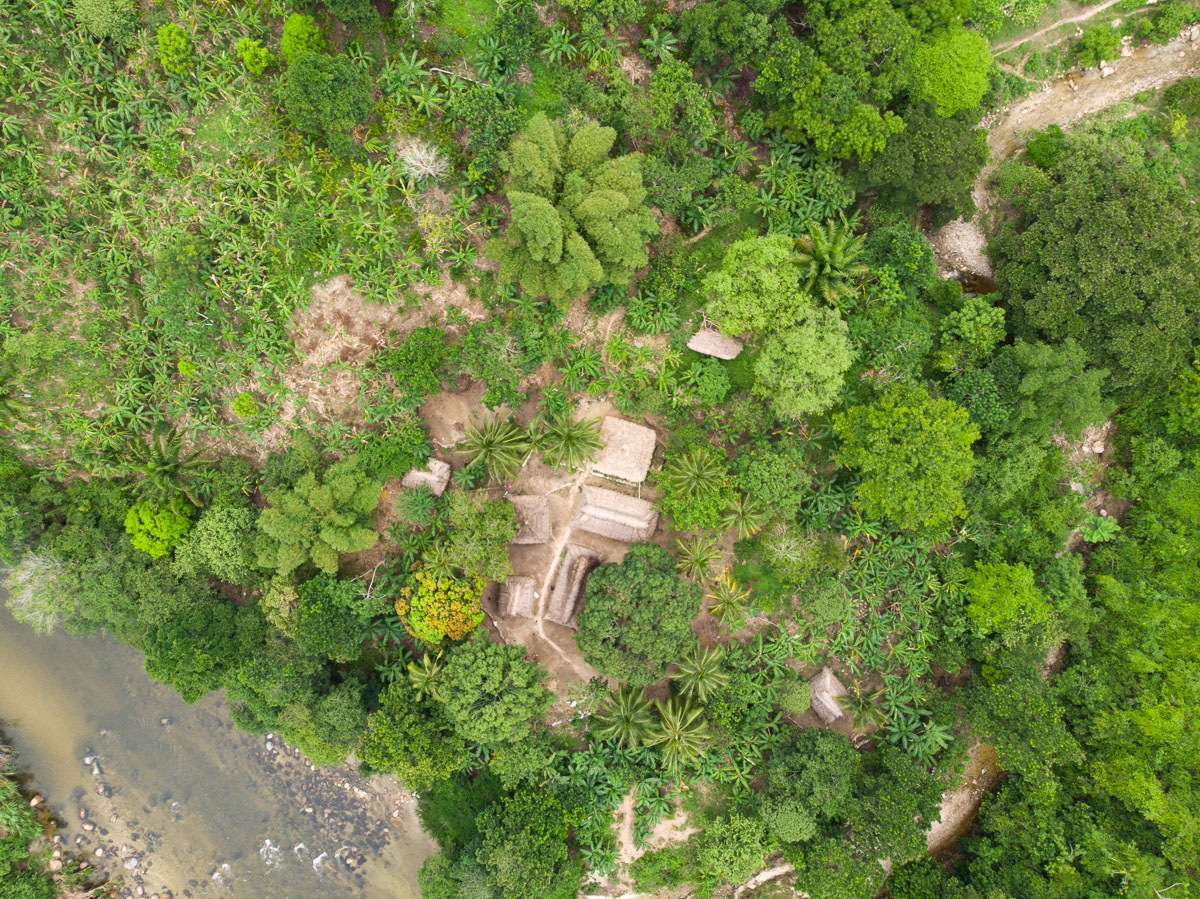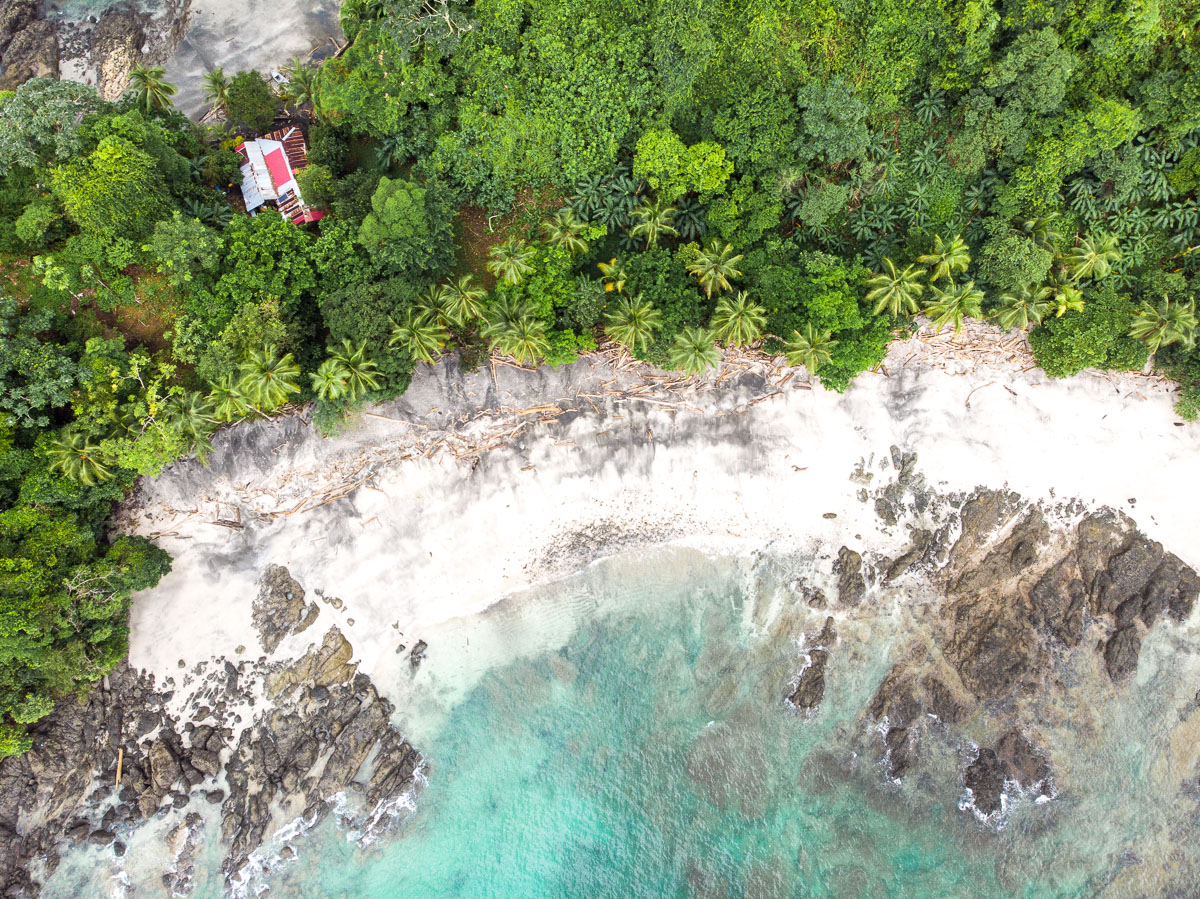What kind of tourism does Colombia want for the future? How does the country want to develop? What role does responsible (or sustainable) tourism play in Colombia?
Since the peace accords, tourism in Colombia has exploded. For the moment, we’re a long way from the world’s most popular tourist destinations in terms of visitor numbers, but it’s clear that Colombia is becoming a trendy destination.
This phenomenon is both positive and frightening, for although there have been many changes, the country is not yet ready and will have to continue adapting very quickly to this ever-increasing influx of tourists.
Disclaimer: we apologize in advance for any grammatical or syntactic errors, as our native language is not English (we're a Colombian-French couple), so we hope you'll forgive us and still enjoy the information we share with you! Please note that all the information on our blog is based on our own experience, and is checked and updated regularly.

Exclusive 5% Off Discount For you
Best Travel insurance for Colombia
Our partner offers the best rates and a 5% discount for our blog readers! (regardless of travel dates)
What’s the situation in Colombia?
Responsible (or sustainable) tourism in Colombia

During our last trip, we went to meet people working for change, for a different kind of tourism. These encounters were rich and showed us that tourism can be a beacon of hope. But not everything is rosy in Colombia, and it’s important to understand how tourism can cause damage.
When you’ve been in Colombia for a long time and you see what has become of Cartagena, Isla Baru, Playa Blanca, Taganga, Palomino, Salento… you can’t help but notice the devastating impact of tourism on local life.
Pollution
On beaches like Playa Blanca, the pollution caused by mass tourism has become critical. Buildings are springing up like mushrooms, with no thought given to their impact, tourists want more services, more fun, so we come and entertain them with jet ski tours accessible directly from the beach – in short, Playa Blanca has become the worst thing that tourism can cause in Colombia.
Plastic pollution is a major problem worldwide, including in Colombia. Colombians are poorly educated on the issue, waste collection programs are totally inadequate, especially in the most remote regions, and waste recycling management is virtually non-existent in the country. The result is dramatic and unmanageable situations in cities, on beaches, in the desert… everywhere.
Exodus of inhabitants
In villages like Salento, tourism has exploded, along with property prices, leading to an exodus of local residents. Foreigners are offering astronomical sums to buy the houses so they can do business there. The locals are also leaving to escape the massive influx of tourists that has ruined their tranquil way of life. The village is losing its soul. Investors, most of them foreign, take over, open shops and hostals, the locals become wage earners, and local life disappears. It’s a phenomenon we’re seeing in Cartagena and Palomino, and one that risks happening elsewhere if nothing is done.
It’s clear that the destinations were not prepared to welcome so many people. Governments are reacting after the battle to try to regulate the influx of tourists and its consequences. Let’s hope that announcements are followed by concrete action.
Narco Tourism
This is another plague of tourism in Colombia, and travellers bear a huge responsibility for the development of this deadly type of tourism. The city of Medellín is trying to put an end to the image of Pablo Escobar that has been made cool by the success of the Narcos series, yet narco-tours continue to proliferate, to the delight of the ignorant and those who love the smell of blood.
Except that Pablo Escobar is NOT a character in a novel! Pablo Escobar has the face of death, he represents terror, torture, executions, massacres, rape, extortion… He represents a terrible period in Colombian history. And you, the tourist, when you want to do the Pablo Tour in Medellín, you know what you do? You push down on the Colombian people’s heads so that they can’t get their heads above water.
Today we even hear that there are informal tours to go and live the life of chemists in clandestine labs! Really?
In fact, cocaine trafficking isn’t just fun and games, it’s a modern-day scourge: we’re talking about thousands of hectares of deforestation, soil and river pollution, armed groups and drug traffickers who hold in their hands the lives of thousands of families, peasants, men, women, children, smugglers, mules, ransom to be safe… We’re talking about men and women who live in fear and misery so that you, the decerebrate tourist, can shiver like in a TV series and stick it deep up your nostrils! Can you smell death in your nostrils?
Above-ground tourism
In remote destinations such as Leticia in the Amazon, we also witnessirresponsible behaviour on the part ofagencies and hotels: they dig the same ruts and offer tourists only a superficial vision of the natural and cultural wealth of the Amazon region, they offer luxury accommodation with air conditioning while the population has limited access to electricity, they bring instocks of food intended primarily for tourists while the population hardly eats enough..
This “out of touch” tourism, disconnected from reality and from local living conditions, is a form of tourism that will be found in various parts of the country, fueled by the demands of travelers who are themselves completely insensitive to the regions they visit.
Reasons for hope
Colombia is the second most biodiverse country in the world. All the ecosystems of the South American continent are found here, and the diversity of landscapes is exceptional.
Each region has its own particularities, culture and customs, with rich traditions that are still very much alive. The Afrodescendant population is one of the largest in Latin America. There are over 80 indigenous communities living in Colombia, speaking more than 60 different languages. Colombia is one of the most diverse societies in the world.
Since 2016, a peace process has been underway to end the armed conflict that has traumatized the country and Colombians for over 50 years. New regions that were previously impossible to visit are opening up to tourism, allowing local populations to imagine a different future.
For all these reasons, and many others, we hope that one day Colombians will realize how incredibly lucky they are to live in such a beautiful country, and that both the government and the population will finally be able to work hand in hand to protect this wealth.
Tourism and the peace process
Numerous projects linking tourism and the peace process are underway in the country. The positive role that tourism can play in the transition to peace, the opening up of the territory and the reintegration of ex-combatants into civilian life is becoming increasingly apparent.
In the department of Meta, for example, the “Paraisos Ocultos” project was designed by a collective of community members and demobilized FARC fighters to enable tourists to discover a region that had long been inaccessible. The hikes are accompanied byex-guerrillas trained as guides. A way out for these ex-combatants, who have been able to learn how to welcome tourists, provide first aid, etc.
As part of the same process of reintegrating ex-combatants into civilian life, a group of ex-guerrillas from Caqueta trained as guides with the International Rafting Federation. They offer tourists their extensive knowledge of the surrounding rivers, mountains and jungles, as well as ecotourism services such as hiking, wildlife observation and rafting.
For us, these kinds of initiatives are representative of what tourism should bring to Colombia. Although they provoke contrasting reactions in a Colombian society still very much divided on the issue of the peace process, these projects are developing all over the country and give us hope for a lasting peace in Colombia.
Responsible tourism certification in Colombia
Today, many local initiatives claim to be sustainable tourism and are moving in the right direction. From small hotels trying to respect eco-responsible gestures to agencies offering virtuous tourism. A certification for sustainable tourism exists in Colombia, and agencies can access these certifications. This is the NTS-TS 003 standard for sustainable tourism.
In reality, some local players have access to official certifications, others make their own and do it well, others do a bit of nonsense and some, it’s fair to say, only see it as a market opportunity. That’s why it’s so important to find out what concrete steps the tourism industry is taking in this area. This encourages local players to communicate better about their actions and make their work visible, and it encourages travelers to take an active roleand enter into a relationship of trust with tourism players.
The government has also set up grants for community-based tourism projects (emanating from the local level), with a principle of selection and support for development.
All these positive aspects lead us to believe thata different kind of tourism is possible in Colombia!
What can we do?
Responsible (or sustainable) tourism in Colombia

For us, responsible tourism is tourism in which two players (traveler and host) commit to a common, virtuous approach. The notion of “two players” is important, because from our point of view, responsible tourism is not the sole concern of the “host”. Tourists themselves have a duty and a responsibility in the way they travel, and must not remain passive, mere consumers.
How can we participate as travelers?
- Plan a trip to Colombia of atleast 3 weeks or more
- Learn about the local context (social, historical, natural)
- Actively seek out responsible tourism operators in Colombia
- Favoring activities that have a positive local impact (environmental, social, economic)
- Takea step aside to discover another face of Colombia
- Do less but better, don’t try to do as many things as possible, take your time, explore, meet..
- Avoid taking part in activities or staying in hotels that run counter to these principles
SOCIAL
- Encourage initiatives with a positive social impact
- Respect local populations by adopting appropriate behavior (cleanliness, clothing, photography, customs, traditions, safety, environment, etc.)
- Make contact, talk, ask, get to know the local population– you’ll be in for a pleasant surprise.
- Don’t photograph anyone in any way, shape or form: find out about them, talk to them, ask permission
- Don’t take part in Narcotours or any other tours dealing in any way with narcotourism
TRANSPORT
- Use public transport– it’s part of the cultural experience of a country.
- Give preference to bus transport , and plan a logical itinerary made up of short stops
- Use soft modes of transport: walking, cycling, train (good for Colombia, forget the train)
- Avoid air travel, which is the most polluting mode of transport.
- Avoid cruises, which are a source of pollution and dehumanized mass tourism.
ECONOMY
- Supporting local businesses means helping families make a living.
- Buy from small retailers rather than large supermarkets
- Give preference to craftsmen, restaurants and hotels run by locals rather than foreigners.
- Avoid excessivehaggling. Craftspeople make a living from their work, and respecting their work is important.
ECO-RESPONSIBLE GESTURES
- Don‘t leave the marked trails in natural parks
- Respect prohibitions where they exist
- Use garbage cans and sort garbage when available
- If garbage cans are not available, always have a container so as not to leave any waste behind
- Apply the principle of“leaving no trace of your passage“, leaving the place cleaner than you found it, picking up litter, setting an example
- Use eco-responsible products: dry or biodegradable soap, sunscreen that respects coral reefs..
- Don’t buy water in plastic bags – they’re a scourge in Colombia
- Water is not drinkable everywhere, so it’s hard not to buy plastic bottles, but whenever possible use a flask if the tap water is drinkable
- To go even further, you can use a water filter to drink non-drinkable water and never buy plastic bottles
ANIMALS
- Observing animals in their natural habitat is the best way to admire them, and if you don’t see any, that’s okay!
- Adoptappropriate and respectful behavior (silence, distance…)
- Check a horse’s health before accepting a ride: a thin or injured horse is a sign of mistreatment.
- Don’t take part in animal shows, where animals are mistreated and have no place
- Don’t go to zoos or aquariums: animals have no place there
- Don’t take part in animal mistreatment: such as riding wild animals, swimming with a shark in a pool, approaching a sedated tiger, etc.
- Do not feed or touchwild animals, etc.
Local tourism operators
Use the services of local agencies, large or small, that have adopted a code of conduct in favor of responsible tourism in Colombia. Some are more “serious” than others. Find out about their existence and, in any case, ask questions, ask the agencies to explain their approach and help change people’s minds!
What you can expect from a responsible tourism agency in Colombia:
- Aproject in harmony with its environment: nature, culture, population
- Tourism on a human scale, “doing less and doing it better”
- Positive impact on local populations (quality of life)
- Respect for the environment and concrete conservation actions
- Awareness-raising and educationalactivities for local populations and travellers
- Project originating from or involving local populations
- Respect for local populations and their territory
Science fiction: the duties of government at national level
- Application of the peace process and unconditional implementation of transitional justice
- Controlled and responsibledevelopment of tourism infrastructures (hotels, restaurants, etc.)
- Regulation of foreign investment and the phenomenon of exodus due to property prices
- Quotas and bans to prevent over-visiting of protected areas.
- Implementation of a genuine environmental protection policy
- National waste collection program, especially in remote areas
- Creation of a genuine waste treatment and recycling policy.
- Halt all major port, deforestation and miningprojects.
- National plan to support and protect social leaders
- Development of the road network and opening up of isolated regions to help peasants retrain
Let’s dream of a different kind of tourism
Responsible (or sustainable) tourism in Colombia

The question that finally comes to mind is: why is this way of conceiving tourism the exception and not the rule? Why isn’t responsible tourism in Colombia the rule that applies to all forms of tourism?
We shouldn’t need to attach the word “responsible” to tourism, it should be the norm and it’s other forms of tourism that should be labelled with a label: “polluting” or “destructive” or “unfair”!
In this way, travellers could have a clear vision of the impact of their choices on the way they travel. But in the world we live in, where respect for people and the environment is the exception rather than the rule, we can dream… but yes, come on! We have to dream!



Committed to responsible tourism!
A French friend of mine, who has lived here for a long time and worked in this sector, recommended the responsible tourism players brought together in ACOTUR
https://www.acotur.co/
Thank you Mathilde,
Indeed, acotur is the organization that looks like all the actors with a responsible approach or who tend to go towards this approach.
Thank you, Mathilde!